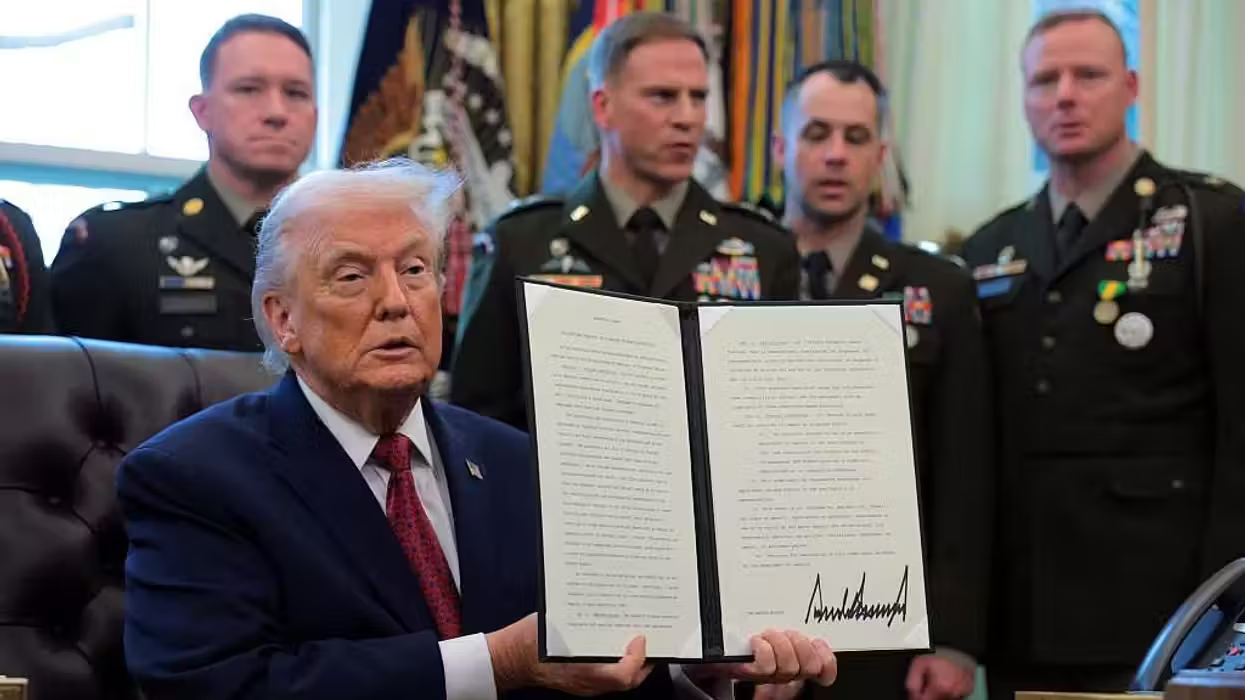
© 2025 Blaze Media LLC. All rights reserved.
The Hills Have Eyes: See the Rock-Shaped 'Sensors' The US Will Use to Monitor Afghanistan
May 29, 2012
“You use them to cover up your dead space..."

The Obama administration and military leaders recently announced plans for U.S. troops to leave Afghanistan by 2014. But a presence of sorts may be staying behind incognito in the shape of rocks.
Wired reports that "palm-sized sensors" will be left in key areas around the country -- some disguised as rocks and others buried underground -- to survey entities passing by:
“Were going to leave behind a lot of special operators in Afghanistan. And they need the kind of capability that’s easy to put out so they can monitor a village without a lot of overt U.S.-made material on pathways and roadways,” says Matt Plyburn, an executive at Lockheed Martin, the world’s largest defense contractor.[...]
“You use them to cover up your dead space — the areas you’re concerned about but can’t cover with other ISR [intelligence surveillance and reconnaissance] assets,” says Lt. Col. Matt Russell, an Army program manager overseeing the deployment of unattended sensors.
Wired reports, when the technology "feels" footsteps or tires, it could call a blimp in the sky to zero in on that specific location. Even more advanced will be when an array of the sensors can signal a passing being from one device to another.
Newer technology for unattended ground sensors includes batteries rechargeable by the sun, which Wired reports could help a single device last for as long as two decades. With that Lockheed has dubbed them "field and forget" devices with "persistent surveillance" capabilities.
Watch this video to learn more about how Lockheed Martin's sensors work:
In addition to Lockheed's devices, Wired reports other manufacturers, such as Camgian Microsystems have developed "ultra-low power" sensors for DARPA that send any information to satellites:
Camgian’s patent claims that the sensor’s ease-of-use and small size means it “is easily emplaced in difficult areas, using airborne assets such as Unmanned Aerial Vehicles.” Edward Carapezza, who has been overseeing UGS research for more than two decades, says drones are already dropping unattended sensors into hostile locations.“In certain areas, we certainly are using unmanned vehicles and unattended sensors together,” says Carapezza, who now works at the defense contractor General Atomics. He declined to name where these operations were being conducted. He simply gave the rationale for the missions. “Instead of sending patrols of our guys in, we send in drones and unattended sensors — dropping arrays, locating bad guys, and then putting weapons on target.”
Other contractors using sensors include Textron and Northrop Grumman. Northrop Grumman's "Scorpion" sensors have the ability to see people about 800 meters away and vehicles 2,100 meters away but they wear out after about a month.
In addition to being used in areas where the U.S. is maintaining less and less of a physical presence overseas, Wired notes they could also be used by U.S. Customs and Border Patrol for security.
Check out Wired's full post for more details on sensor technology being used for surveillance here.
Want to leave a tip?
We answer to you. Help keep our content free of advertisers and big tech censorship by leaving a tip today.
Want to join the conversation?
Already a subscriber?
more stories
Sign up for the Blaze newsletter
By signing up, you agree to our Privacy Policy and Terms of Use, and agree to receive content that may sometimes include advertisements. You may opt out at any time.
Related Content
© 2025 Blaze Media LLC. All rights reserved.
Get the stories that matter most delivered directly to your inbox.
By signing up, you agree to our Privacy Policy and Terms of Use, and agree to receive content that may sometimes include advertisements. You may opt out at any time.






